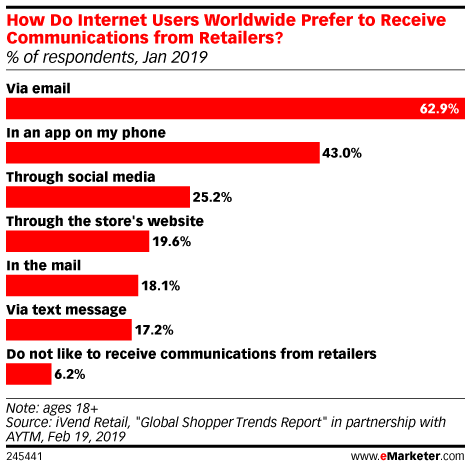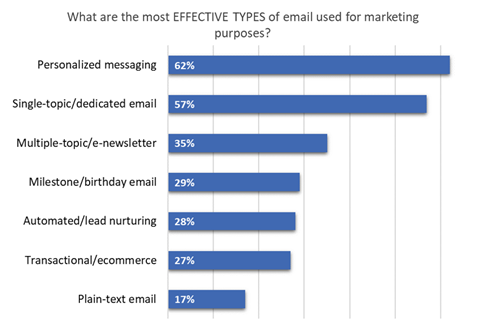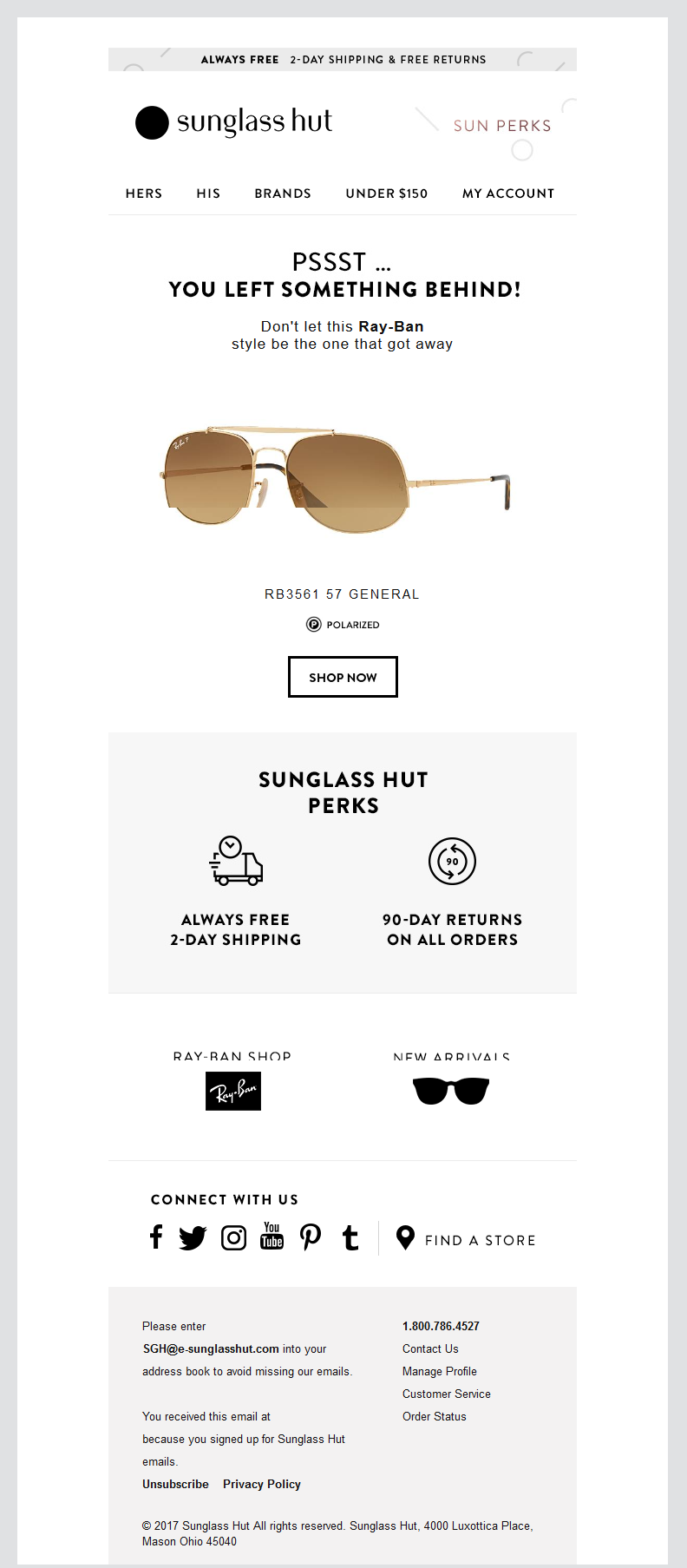We’ve all heard about how powerful emails can be for your marketing strategy. But exactly how much? The following numbers might help you paint a picture.
- The number of email users worldwide in 2019 was 3.9 billion & is estimated to grow around 4 billion in 2020.
- 293.6 billion Emails were sent and received in the year 2019 and are estimated to reach a whopping 306.4 billion in 2020.
- 30% of marketers around the globe say that, of all marketing channels, email gives the highest ROI.
Does the huge number of email users, i.e., 3.9 billion, translate into email marketing working for you and your business? No. Do the email volumes (sent and received) carry any merit in the efficacy of your campaigns? No.
- The idea of these stats is not to only focus on the numbers, but also to derive deeper insights from them. Data is only valuable if you are able to glean relevant insights for you to create sustainable loops in your business.
- For instance, from the above data, you can make a calculated bet that your prospective customer is most definitely going to have an e-mail address. Your user may also prefer having conversations with your brand on email. According to an early-2019 study, 62% of consumers prefer to be contacted by brands through email.

- The increasing number of emails being sent and received indicate the deep-rooted relationship that users have with emails. Meaning, your user may be spending a significant time checking their emails.
- The cost of acquiring users through email will always be cheaper as compared to the other channels of acquisition. In fact, in 2018, every $1 spent on email marketing returned an average of $44.
Data can be tricky. However, it is more important to understand what kind of insights you can derive for your own business. With all the above data-points, you can make a safe bet that there is nothing to lose in E-mail Marketing, but a lot of potentials to gain instead.
The potential to deliver mind-blowing customer experience on the channel your customers prefer to use. The potential to leverage the cost-efficiency of the channel and power your Marketing-ROI. The list can go on.
If used smartly, you can harness the maximum power of Email Marketing. However, the question is, what can you do to ensure you are using this channel to its maximum capacity?
Leveraging Intelligent Technologies
Technology has always been at the helm of skyrocketing efficiency. Ranging from emails to self-drive cars, tech plays a major role in rinsing barriers in every part of life.
Artificial Intelligence (AI) and Machine Learning (ML) aren’t mere buzzwords, they are thrusting the rate of eradication of these barriers & are acting as catalysts to further the way we function.
AI can deliver emails that have dynamic content such as fresh shoe-options for someone who previously searched for shoes. With the help of AI, you can optimize the send-time to ensure high open and click rates.
Your AI-engine can help you find the best words to optimize your subject line, which is the most critical touch-point for any email to make an impact.
Placing intelligence is a smart way to ensure you are clutching every bit of value your data can provide.
Placing User Experience Above Everything
The User Experience (UX) is at the forefront of every successful business. Any business that prioritizes UX will always have an edge.
If an email campaign is designed without discussing the merit that it carries for a user, it is a recipe for disaster. Shipping an email campaign without keeping the UX at the highest priority, will inevitably have below average results.
Paying attention to little things in your email adds to the UX –
- Personalized Advertising — If your customer has shown consistent intent to purchase a laptop, sharing promotional emails of shoes is not exactly what your customer expects. Your email adverts need to be consistent and relevant to your customer’s behavior.
- AMP Email Technology — A disruption in a user’s flow has a lot of after-effects (bonus – ever wondered why Facebook, Twitter have their own in-app browsers?) AMP email is a technology that allows email marketers to embed engagement elements like carousels, purchase buttons etc., into their emails. The user can interact with the email without having to visit the website on a new tab, thereby maintaining the flow and UX.
- Creative Progression — Your customer has thousands of emails in their inbox with the same kind of creative feel. Is your email-creative delivering a unique delight? Always remember — humans like to showcase something that is brag-worthy. If your emails make your customers feel special, they will make it a point to share it with everyone in their network.
As the number of customers scale, there’s a tendency to ignore the factor of CX/UX. Digging deep down to every customer, identifying what experience your email campaign is delivering to every particular user, all these are extremely important to make sure your campaign success is always on an upward trajectory.
Adapting to the Rapidly Reforming Audience
With new technologies penetrating the market, customers are also advancing, and raising their expectations from brands. The rate of smartphone adoption has accelerated beyond imagination, generating immense opportunities for businesses to connect with their users.
Also, the rate of tolerance has decreased significantly. One irrelevant communication and you risk churning that user permanently from your business.
P.S — Not optimizing your emails for mobile is like riding a bike without a helmet.
In such a scenario, no business can afford to spray & pray their email campaigns. Your email marketing has to be custom-made to each of your prospective customers.
Pursuing Personalized Communications
You can delight your customers on every interaction he/she has with your brand. More importantly, your prospects are constantly developing an opinion about your brand with every form of communication you send their way.
Personalizing your experience is a beautiful lever you can use to pivot these opinions in your favor. Which is why it is of utmost importance to deliver the customer experience that is enriching across all the channels of engagement, especially e-mail.

Source: Digital Marketing Community
Personalized emails top the chart of popular email marketing themes. Users expect less spam & more relevant emails. If a particular campaign does not resonate with a user, he/she will ignore it at best. At worst, this may even lead to a high rate of unsubscriptions and report to spam.
Personalizing is not merely including {{first_name}} in your emails. Guess what, every other brand in your vertical is doing the same and much more. In order to focus on standing out, you need to identify the core value proposition of your business.
For an e-commerce company, it could be sharing relevant products to their inbox based on their purchase history (Tap to learn more about E-commerce Personalization). For a travel brand, it could be sharing relevant trip ideas based on the holiday history of a particular user. For an OTT player, sharing a documentary of cars for an automobile connoisseur can have excellent results.
Here is how you can leverage technology to design flavorful email campaigns for your company.
6 Ways AI-Powered Personalization Is Reshaping Email Marketing
Automation benefits are easier to visualize when you put an analogy to it. Your body is
the best example. Your system manages everything, even while you are fast asleep — be it your heart rate, respiration rate etc., let’s call them “the life essentials”.I believe you understand the value of these processes being carried out in the background. A similar system applies to your email marketing. Personalization, contextual conversations, relevant suggestions dynamic content are like your “email marketing essentials.”
Having said that, let’s understand how AI can help email marketers elevate their strategy and generate unparalleled results.
Predictive Personalization
Data is the fuel for every AI/ML engine. Using data, polished AI algorithms can help you understand what kind of product is highly-likely to be purchased by any user in the time to come.
This can be further used to send automated emails to the users based on these predictions without needing an extra pair of eyes. These recommendations help in advancing your standard of customer experience due to the prediction model.
For e.g. — This automated email campaign from sunglass-hut understands the past purchase behavior of a user and sends an email campaign that resonates with the customer.

Most of the purchase decisions can be either need-based or impulsive. To dig deeper and understanding every user’s purchase behavior can be exhausting. It will take long hours and a huge workforce to identify what drives purchase decisions for a cohort of users.
Meanwhile, the efficiency of the predictive campaigns is extremely high as automation means no human involvement required. Since there’s a lesser human requirement, you conserve a truckload of hours which can be used to focus on other important things that need your attention.
You hang on to the budget enabling you to tour on other experiments all the while you gain high returns with the data-backed campaigns. To put it simply, you deliver a mind-blowing UX, retain your time and money & add to your revenue.
Smart Segmentation
Every user has some unique behavior trait that sets him/her apart from the rest of the user base. A 45-year old farmer will behave very differently from a businessman in a metropolitan city & so should your marketing.
The needs of every user will keep on shifting as you scroll through your user base. In such cases, ignoring these important traits can lead to a disastrous email campaign. Shooting out an email campaign about a limited edition t-shirt in your store to someone who has shown no interest in purchasing a t-shirt does not make sense.
Segmentation is the need of the hour to create context and move the user further along the funnel into the decision-making stage. It is necessary that the campaign you are shipping resonates with the prospects in order to assemble a higher success rate.
Using the power of AI, you can identify trends about your users based on their purchase history, interests, demographics and calculate their inclination to take the desired action.
You can segment users based on these identified traits and other attributes to create campaigns that complement the users’ interest. The primary goal behind segmentation is to focus on amplifying customer experience at every touchpoint of your communication.
The best marketing doesn’t feel like marketing’ – Tom Fishburne
When you group the users on their attributes using AI-Powered Segmentation, you start understanding your customers better. When you start discerning your customers better, you start delivering personalized experiences over email campaigns leading to a higher success rate.
Automated Work-Flow
Automation can do a lot of heavy-lifting when it comes to saving your time and delivering results. Using products like Smartech, which leverage sophisticated AI engines you can make the process of marketing easier and faster.
It is particularly important to nurture your leads throughout the different stages in their buyer’s journey. The pro-active approach in communicating the right kind of benefit your brand delivers in solving their problems can go a long way.
There will be times where your team needs to dedicate time elsewhere. In such scenarios, you can rely on Marketing Automation products that help you unlock the next wave of growth.
The AI engine can identify behavioral trends of your users, track the events that are stored and send out tailor-made email communications with the intent to cultivate conversions.
Optimized Subject Line & E-mail Content
Every brand has a defined personality across every marketing collateral. Each time you update the website copy, post on social media, speak to customers on a phone-call, you display your brand tonality.
Customers identify and connect with the voice of a particular brand. Email content that doesn’t feel like the same brand voice and tonality will have some repercussions. In-short, familiarity matters.
Humans tend to process and react to different words differently. This interesting research conducted at UIC showcases how individuals share contrasting answers to questions, only with minor changes in the intensity of words.
Through Natural Language Processing (NLP), AI can assist in finding words that will resonate with the recipients while being consistent with the brand tonality. An impacting subject line and email content grant better results, AI helps you take this one step forward by personalizing the experience.
Send-time Optimization
Now that you have figured out the language you need to speak. It’s important to take the time factor into consideration. The idea is to ensure all the ingredients of a successful email campaign are in place.
A group of users may prefer checking their emails after their afternoon lunch. Some may prefer sitting down with a warm cup of coffee in the early evening to glance through their emails.
Ideally, your emails should land at the top of the email list of your customer. Naturally, if your email is the first email that your customer sees, there exists a higher chance of engagement. Especially after an engaging subject line, the positioning of your email can pivot the results in your favor.
Artificial Intelligence grants marketers the ability to understand the precise time a user is likely to open emails. In other words, you can compartmentalize and send the email just as the customer is beginning to sip their coffee.
Analytics
Marketers, especially working in the digital space are fixated on analytics and for good reasons. Making informed decisions ensure you are not falling prey to the human tendency of relying on intuition.
“Without data, you’re just another person with an opinion” – W. Edwards Deming
Think of data & analytics as maps that help you head in the right direction to your destination. Data on its own is completely useless if not used properly.
Artificial Intelligence can help segregate data points from your email campaigns into different or existing dashboards. Map the behavior of your customers to identify if the user is likely to churn.
In simpler terms, your AI engine can identify that a particular user has not been engaging with your email campaigns. A low engagement rate indicates decreased interest. Decreasing interest suggests a timeline within which you will lose that customer.
Imagine someone calling to sell you a membership to a salon that gave you a bad haircut, annoying right? (Chase UX above Anything) Your communication with this user-set should be different and personalized.
Identifying more of such patterns from analyzing your data gets easier with AI-Powered Engines. Incorporating these patterns into prediction models are even more rewarding when fed the correct kind of data.
Email Marketing is here to stay, if not forever then at least for a significant period of time. Until it does, it’s wise to ensure you are getting every bit of this channel. Get in touch with us to know more about our email marketing channel.
Subscribe for Exclusive Industry Insights







